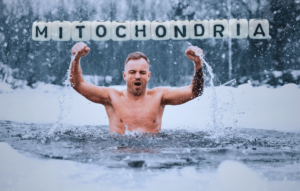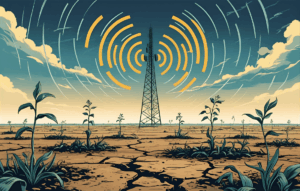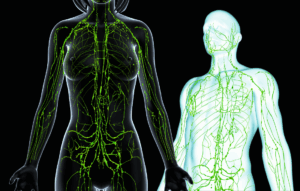For years, cold plunges were the domain of elite athletes and testosterone-fueled biohackers. But what if the most overlooked beneficiaries of cold therapy are women? From fertility to fat-burning, mood to menopause, emerging science is revealing just how powerful cold exposure can be for the female body—and why it’s time to ditch the old narratives. This article dives into the hormone-boosting, metabolism-revving, cycle-supporting benefits of ice baths for women, with stories, science, and plenty of real talk along the way.
The Testosterone Twist: Why Women Need It Too
When people think of testosterone, they often think of muscle-bound dudes and aggressive gym rats. But here’s the wild truth: testosterone is the most abundant sex hormone in women’s bodies. Yes, you read that right. Women have more testosterone circulating than estrogen when you total up estrone, estradiol, and estriol. It just happens to be in much smaller quantities than in men.
Roughly 25% of that testosterone comes from the ovaries, with the rest secreted by the adrenal glands, fat tissue, and even the skin. Cold exposure stimulates all of these tissues. And that’s where the magic of ice baths starts to shine for women, even those who are post-menopausal or have had hysterectomies.

Cold plunges also engage the sympathetic nervous system, stimulating hormone production and enhancing androgenic activity. For many women struggling with energy dips, mood swings, or metabolic crashes, this could be a missing puzzle piece.
Ice Baths as a Natural Testosterone Booster
Take Pamela Butler, a 60-year-old yoga teacher who had her ovaries removed and was navigating the maze of surgical menopause. After 40 days of daily cold plunging, her testosterone jumped from 14 ng/dL to 168 ng/dL. Her endocrinologist told her to stop her hormone therapy. Her estradiol rose. Her mood, clarity, and energy skyrocketed.
Then there’s Elise DeSoutter. No kids, no major lifestyle changes, just cold plunges 2-3 times a week for four months. Her total testosterone nearly doubled. Her estrogen tripled. Her muscle mass increased, fat decreased. She felt more confident, energetic, and alive.
Beyond the Anecdotes: Understanding the Mechanism
Cold exposure may increase luteinizing hormone (LH), which is a primary trigger for testosterone production in both men and women. It also reduces cortisol—a hormone that often suppresses sex hormone production when chronically elevated. By lowering baseline inflammation and stress markers, cold plunging creates a more favorable environment for hormonal harmony.
Hormonal Health: Cold Plunge’s Balancing Act
Hormones run the show when it comes to women’s physical, emotional, and metabolic well-being—and cold exposure happens to be one of the most overlooked tools to help recalibrate them. This section explores how ice baths can help women walk the hormonal tightrope, not by forcing the body into imbalance, but by guiding it back toward homeostasis.
The Fine Line Between Too Little and Too Much
Low testosterone in women doesn’t just mean a low sex drive. It can also lead to fatigue, depression, cognitive issues, poor muscle tone, and increased risk for osteoporosis. But too much testosterone? That’s a problem too. Think PCOS, acne, unwanted hair growth, and mood disturbances. Cold exposure appears to act as a hormonal modulator. It doesn’t just crank testosterone up indiscriminately. It balances.
This is crucial because the modern environment is full of endocrine disruptors—from plastics to pesticides to synthetic fragrances. Ice baths provide a biological reset, helping the body recalibrate its internal thermostat, so to speak.
The Cold Pressor Test: Scientific Evidence in Action
The cold pressor test, commonly used in scientific research, involves immersing a hand in ice water to assess cardiovascular and neuroendocrine responses. While it has been shown to temporarily elevate norepinephrine and activate the sympathetic nervous system, a 2016 study offers a more nuanced view into how female hormones may help improve tolerance and adaptation over time. These findings support the idea that cold exposure can train the nervous system—particularly in women—to become more resilient, hormonally and mentally.
Now imagine what full-body immersion can do over time, especially with regularity and proper nutrition.
Fertility, PCOS, and Metabolic Recovery
Fertility and metabolism are intimately connected in the female body, and cold exposure might just be the unlikely ally that brings both back into balance. This section explores how cold plunging could improve insulin sensitivity, reduce PCOS symptoms, and support natural hormone regulation for women struggling with reproductive or metabolic issues.
Cold Plunge as a Fertility Hack?
Polycystic ovary syndrome (PCOS) is one of the leading causes of infertility in women. It’s closely tied to insulin resistance, which is now rampant thanks to the modern diet. The standard American diet (SAD) is overloaded with refined carbohydrates and seed oils—a recipe for metabolic disaster. Cold exposure helps reverse this damage by activating brown adipose tissue (BAT), improving insulin sensitivity, and restoring hormonal function.
BAT burns glucose and triglycerides to produce heat, effectively acting as a glucose sink. That’s great news for women with PCOS, metabolic syndrome, or prediabetes.
Animal studies have even shown that cold-treated female rats with PCOS restored ovulation, normalized testosterone, and doubled their pregnancy rates. Human case studies are catching up fast.
Anecdotal Wins, Clinical Promise
Functional medicine clinics across the U.S. now use cold exposure as part of fertility protocols, especially for women undergoing IVF or those trying to conceive naturally with hormonal imbalances. They’ve seen improved cycle regularity, reduced cyst formation, and even enhanced egg quality based on hormone profiles and ultrasound scans.
Brown Fat: The Unsung Hero of Women’s Health

It might not get as much hype as abs or glutes, but brown fat is one of the most metabolically valuable tissues in the body—especially for women. Unlike white fat, which stores energy, brown adipose tissue (BAT) burns energy to generate heat, thanks to its high mitochondrial content. This makes it a major player in regulating body temperature, metabolism, and even hormone function.
And here’s the kicker: brown fat isn’t just for babies. While newborns are born with high amounts of BAT to help them survive outside the womb, adults can reactivate and even grow new brown fat reserves. The most effective way to do this? You guessed it—cold exposure.
In PET scans, brown fat shows up like a furnace igniting in the body, glowing red as it kicks into gear during cold immersion. It’s most commonly found in areas like the neck, spine, clavicles, and around the kidneys—exactly where you’d want heat generation during shivering or icy environments. But it’s not just about staying warm.
Why Brown Fat Matters for Women:
It clears glucose from the blood
It boosts insulin sensitivity
It helps with autoimmune disorders like Hashimoto’s
It may protect against cognitive decline and neuroinflammation
Dr. Courtney Hunt used cold plunges and a ketogenic diet to reverse her Hashimoto’s. PET scans show brown fat lighting up like a furnace during cold exposure, working synergistically with the thyroid to regulate body temperature and metabolism.
Mitochondria, Smooth Muscle, and Circulation
The benefits of cold plunging don’t stop at hormones and brown fat. Beneath the surface, cold exposure works on some of the most fundamental aspects of female physiology—namely, mitochondrial function, smooth muscle tone, and circulatory health. These often-overlooked systems play a key role in how energized, clear-headed, and physically resilient a woman feels day-to-day.
Why Your Mitochondria Love the Cold
Cold plunging activates mitochondrial biogenesis—the creation of new mitochondria. These little powerhouses are essential for testosterone production, mood, and energy. They convert cholesterol into pregnenolone, which is the first step in making testosterone. No healthy mitochondria = no hormone balance.
Athletes and biohackers have long known that improved mitochondrial function translates to better endurance, mental clarity, and recovery. For women, it means better regulating reproductive hormones and a stronger metabolic engine.
Smooth Muscle Benefits & Circulatory Flow
And smooth muscle? That’s the involuntary muscle found in your blood vessels. Ice baths make these contract, then relax. Over time, this is like strength training for your vascular system, improving circulation and possibly lowering blood pressure.
Women who experience cold hands and feet, menstrual clotting, or sluggish recovery post-exercise often report major improvement in circulation and thermoregulation after consistent cold exposure.
Cold Therapy for Pregnant and Postpartum Women
Pregnancy and the postpartum period place unique physiological demands on a woman’s body. While not traditionally associated with cold exposure, emerging evidence and anecdotal reports suggest that cold therapy could offer specific benefits during this transformative time—especially when used with caution and personalized care.
Is It Safe to Cold Plunge While Pregnant?
This is a controversial area, but one worth discussing. Studies show cold exposure can improve insulin sensitivity and reduce the risk of gestational diabetes—a growing concern for modern mothers. One Canadian study found gestational diabetes was more common in the summer than in winter (Retnakaran et al. 2018). More cold = better outcomes.
PhD researcher Josephine Worseck, a certified Wim Hof instructor, cold plunged throughout her pregnancy. She experienced no adverse effects. She also plunged while breastfeeding, reporting no impact on milk production. Instead, she found it emotionally and mentally grounding during postpartum recovery.

Hormonal Support for the Fourth Trimester
Postpartum hormone shifts can be brutal—mood crashes, thyroid dysregulation, inflammation, fatigue. Cold plunging appears to help stabilize these shifts by reducing cortisol and increasing dopamine, endorphins, and norepinephrine. Women report better sleep, mood, and energy levels even in the trenches of newborn life.
Addressing the Controversy: Stacy Sims vs. Cold Advocates
Not everyone’s sold on the idea of women plunging into frigid water for health benefits. Let’s explore one of the most debated voices in the field, examine the actual research behind her claims, and break down why a one-size-fits-all warning might not hold up under scientific scrutiny.
Why Sims Got It Partially Wrong
Stacy Sims, PhD, a popular voice in female athletic health, recently made headlines for cautioning women against cold plunges, claiming it could disrupt hormone balance. While it’s true women are more cold-sensitive and initiate shivering faster, that doesn’t mean cold exposure is harmful. In fact, studies show that women adapt just as well as men with regular exposure.
Lauren Burns, PhD, an Olympic gold medalist, found that elite female athletes were more likely to engage in regular ice bathing than lower-performing athletes. And a large study out of the University of Portsmouth found that cold water swimming improved menstrual symptoms, mood, and menopausal symptoms in over 1000 British women.
What We’re Missing in the Debate
The debate often overlooks nuance. Yes, women may respond differently to cold. But different doesn’t mean worse. In many ways, women’s resilience to physiological stress is superior—think childbirth, menstrual blood loss, and hormonal cycling. Cold therapy may require a more personalized approach, but the benefits are still profound.
Cold Exposure Also Helps With:
Cold plunging may feel like punishment at first, but the benefits, especially for women, are hard to ignore once you look at the research. Below is a breakdown of key health domains impacted by cold exposure, backed by both emerging studies and compelling case reports.
1. Menstruation
Reduced menstrual cramping and PMS symptoms: Cold exposure stimulates the vagus nerve and reduces prostaglandin production, compounds responsible for uterine contractions and cramping.
Stabilized mood and emotional regulation: Cold plunging increases norepinephrine, dopamine, and endorphins within minutes, helping balance the emotional swings common during the luteal phase.
Improved energy and blood flow: Regular cold exposure improves circulation, which can reduce fatigue and heaviness often felt before menstruation.
Cycle regularity: Anecdotal reports and small pilot studies suggest cold therapy may support HPO (hypothalamic-pituitary-ovarian) axis regulation, leading to more consistent cycles.

2. Menopause
Hot flash reduction: Cold exposure improves thermoregulation by training blood vessels and the hypothalamus, potentially reducing the frequency and severity of hot flashes.
Bone density markers: Cold activates brown adipose tissue (BAT), which secretes hormones like osteocalcin that influence bone formation.
Mental clarity and libido: As dopamine and testosterone rise, so does mental alertness and sexual desire, both of which often decline post-menopause.
Sleep improvements: Ice baths reduce cortisol and can help reset circadian rhythms, improving deep sleep duration.
3. Endometriosis
Pain and inflammation relief: Cold exposure acts as a systemic anti-inflammatory, reducing prostaglandins and cytokines associated with pelvic pain.
Pelvic congestion relief: Improved circulation and lymphatic drainage can reduce feelings of bloating and pressure.
Clinical promise: Ongoing trials are investigating cryotherapy as a supportive protocol in endometriosis treatment alongside diet and hormonal therapy.
4. Bone Health
Boosts parathyroid hormone (PTH): Exposure to cold stimulates PTH, which helps mobilize calcium and supports bone remodeling.
Cold training linked to improved bone turnover markers: Studies in cold-adapted populations suggest greater bone mineral density and reduced markers of bone resorption.
Works synergistically with magnesium: Cold plunging stresses the body (in a good way), and when paired with proper nutrition—including magnesium—it supports skeletal integrity.
5. Depression and Anxiety
Immediate mood uplift: Cold exposure boosts norepinephrine by up to 530% and dopamine by up to 250%.
Reduces rumination: Studies show cold-water immersion increases functional connectivity in the brain’s default mode network, which reduces overthinking and intrusive thoughts.
Long-term resilience: Regular cold exposure builds mental toughness, reduces baseline inflammation, and supports neuroplasticity—factors protective against depression.

Best Practices for Women Using Ice Baths
So, you’ve heard all the benefits and you’re ready to give cold plunging a shot, but where do you start? Like any powerful wellness tool, cold therapy is most effective when approached with intention and care. Here’s how women can get the most out of their ice bath routine without wrecking their hormones or burning out.
1. Start Slowly
30 seconds to 2 minutes for beginners
Build up as your body acclimates
Listen to your cycle: avoid aggressive plunging during luteal phase if symptoms worsen
2. Use the Right Temperature
45°F to 55°F is the sweet spot
Lower for shorter durations
Prioritize consistency over intensity
3. Time It Wisely
Best done in the morning or post-workout
Avoid right before bed (may be too stimulating)
Sync with your infradian rhythm if cycle-aware
4. Track Your Progress
Monitor hormone levels
Journal mood, energy, cycle changes
Use basal body temperature and cycle apps if focused on fertility
5. Combine with Nutrition
Prioritize animal fats and proteins
Avoid seed oils and excessive carbs
Get magnesium and cholesterol (both needed for hormone production)
Eat nutrient-dense, whole foods that support thyroid and adrenal function
Final Thoughts
Ice baths are not just for male biohackers and fitness freaks. Women—from teenage athletes to post-menopausal grandmothers—stand to gain profound health benefits from a regular cold plunge routine. From hormone regulation to fertility, metabolism to mood, the data speaks volumes.
Forget the fear. Embrace the cold. And if you’re still unsure, remember this: the female body is built for adaptation. And few practices are as powerfully adaptive as ice.













